Innovative Wall Paint Patterns for Modern Homes
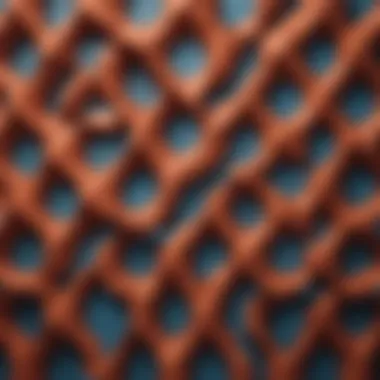
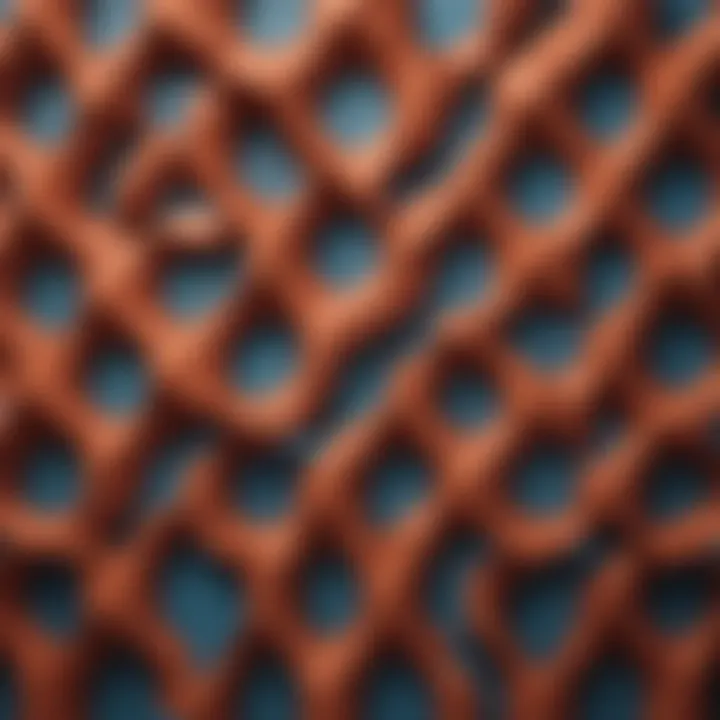
Intro
The evolution of wall paint patterns has shaped the way we perceive and experience our living spaces. In today’s dynamic design environment, patterns are more than just aesthetic choices; they evoke emotions, represent personal style, and create distinct atmospheres in homes. This article offers an expansive view of innovative wall paint patterns, exploring their evolution, applications, and implications for interior design. Homeowners, design enthusiasts, and anyone keen to elevate their living spaces will find valuable insights throughout this narrative.
Design Inspiration
Designing with wall paint patterns involves understanding current trends and color psychology. Choosing the right style and color can transform a space significantly.
Trending Styles
Wall paint patterns today encompass a range of styles, from geometric and abstract to organic and traditional motifs. Geometric designs have gained traction, as they provide a modern and structured look. Organic patterns, inspired by nature, tend to foster a calming environment. Furthermore, there is a growing interest in eclectic mixes, where different styles coexist on the same wall or throughout various rooms.
Color Palettes
Color plays a crucial role in how patterns are perceived. Warm colors generally create a welcoming atmosphere, while cooler tones can induce calm and relaxation. Neutral palettes allow for flexibility and can bring forth intricate patterns without overwhelming the space. Homeowners are encouraged to experiment with various color combinations to find those that resonate with their preferences. Bold contrasts can add vibrancy, while softer hues can enhance subtlety in design.
Practical Tips
From execution to maintenance, understanding practical aspects is fundamental when employing innovative wall paint patterns in a home.
Maintenance & Care
Maintaining painted walls is essential to ensure long-lasting beauty. Regular dusting and gentle cleaning of painted surfaces can prevent paint degradation. It's advisable to use specific cleaning agents compatible with paint types. If patterns are intricate, consider touch-up kits that include matching paint shades for any necessary repairs.
Budgeting & Planning
Before embarking on a painting project, budgeting is crucial. Understand that expenses can vary depending on the size of the area and the materials used. Planning involves not only financial considerations but also the timeline for completing the project. Having a clear plan will lead to a smoother execution and more favorable results when creating wall patterns that enhance the home environment.
Quote: "The right wall pattern can make even a small space feel expansive and a dull room lively."
Choosing innovative wall paint patterns requires a blend of creativity and practical application. From understanding current trends to maintaining painted surfaces, this guide aims to inform and inspire homeowners. The process may seem complex, but with a thoughtful approach, anyone can achieve stunning results in their living spaces.
Prelims to Wall Paint Patterns
The appeal of wall paint patterns goes beyond mere aesthetic choices. They serve as a reflection of personal taste and lifestyle. Integrating these patterns into home decor can dramatically enhance the overall ambiance of a space. Homeowners often seek ways to express individual creativity while also ensuring that their environments are welcoming and stylish. Wall paint patterns are an effective method for achieving this balance.
Definition and Importance
Wall paint patterns involve various techniques and designs that transform plain walls into visually engaging surfaces. Their significance lies in their ability to change the mood and perception of a room. For instance, stripes can evoke a sense of height or width, while geometric shapes can create a sense of order and structure.
Moreover, the importance of these patterns is visible in their versatility. They can be used in different areas of the home, including living rooms, bedrooms, and kitchens. Homeowners can select patterns that resonate with their personal styles, whether they prefer bold statements or subtle accents. Patterns can also influence how light and space are perceived, contributing to the overall functionality of a room.
Benefits of Utilizing Paint Patterns:
- Customization: Homeowners can customize patterns to fit their unique style and preferences.
- Visual Interest: Patterns can add depth and character to spaces that may otherwise feel bland.
- Space Enhancement: Certain patterns can make spaces feel larger or cozier, depending on the desired effect.
Historical Context
The practice of using wall patterns dates back centuries. Throughout history, various cultures have employed decorative painting techniques to signify status, taste, and cultural identity. Ancient Egyptian tombs often featured intricate frescoes, showcasing artistry and stories from daily life.
In Europe, the Renaissance period marked a significant evolution in wall design. Elaborate murals and patterns adorned the walls of palaces and cathedrals, showcasing the wealth of patrons. This historical approach underscores how wall patterns have always played a role in conveying messages and enhancing architectural beauty.
In the modern context, the advent of new materials and technologies has further expanded the possibilities for wall paints and patterns. Today, homeowners enjoy a plethora of options due to innovations in paint formulations and application techniques. As a result, paint patterns have become more accessible and appealing to a broader audience.
Types of Wall Paint Patterns
Understanding the various types of wall paint patterns is crucial for homeowners aspiring to enhance their living spaces. Different paint patterns create unique atmospheres, whether one aims for modern sophistication or cozy charm. The selection of paint patterns also affects how light interacts with surfaces, influencing perceptions of space and color. Homeowners can express individual style by choosing patterns that resonate with their personal tastes and the overall design of their homes. This section will detail four primary types of wall paint patterns, highlighting their characteristics and effects.
Stripes
Stripes are a versatile option in wall painting. They can make a room feel larger or more dynamic, depending on their orientation and color schemes. Stripes can be bold or subtle and can significantly vary in width and length. They add energy and can act as a focal point in a room.
Horizontal Stripes
Horizontal stripes create a sense of spaciousness. They draw the eye across the room, making the area feel more expansive. This characteristic makes them a popular choice for small spaces. The key feature of horizontal stripes is their ability to visually broaden walls. They are typically created using tape for clean edges, and color selection is vital for achieving the desired feel. One disadvantage is that they may require precise measurements for successful application.
Vertical Stripes
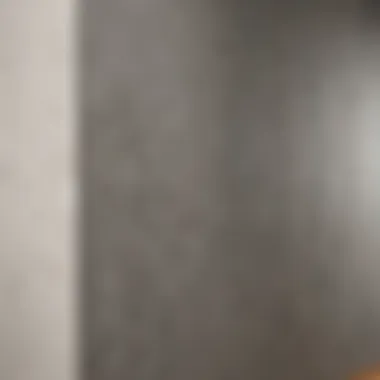
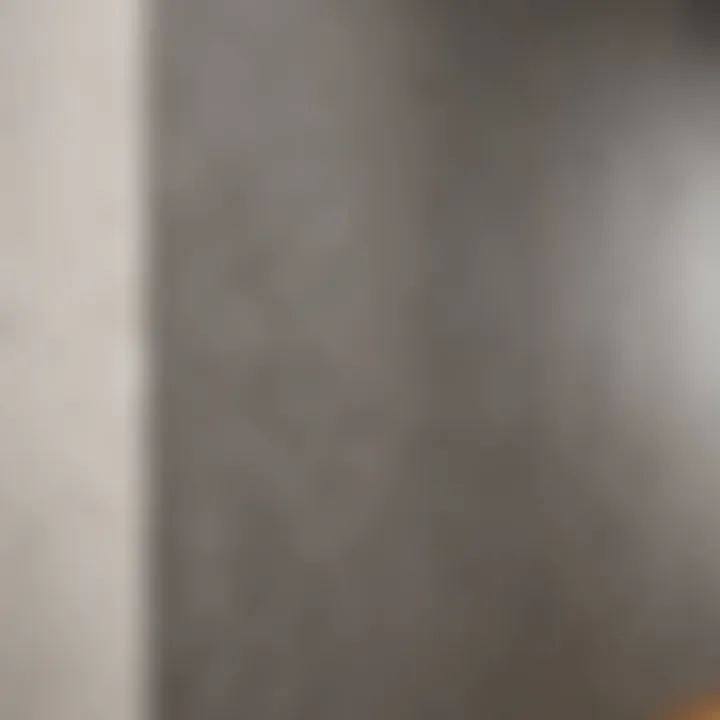
Vertical stripes have a different impact, often making ceilings appear higher. This characteristic can be especially beneficial in spaces with low ceilings. Their key characteristic is how they elongate the walls. This pattern is visually appealing and can add sophistication to a space. However, it may not work well in very tall rooms without careful color choices to avoid a disjointed look.
Diagonal Stripes
Diagonal stripes introduce a dynamic element to wall designs. They can create a sense of movement and energy. Their key characteristic is the unique visual interest that comes from their angles. This option may be less common but can serve as an eye-catching feature wall. While they are bold and striking, achieving perfect angles can be challenging, thus requiring more skillful application.
Geometric Shapes
Geometric shapes in wall paint patterns offer a modern and artistic approach. They are flexible and can cater to various aesthetics from minimalistic to eclectic. This type often captivates the audience with its structured yet creative designs.
Squares and Rectangles
Squares and rectangles provide a classic geometric look that is easy to implement. The key feature of this pattern is its straightforwardness, appealing to many homeowners. These shapes can create a grid effect that is visually satisfying. Although often considered simplistic, they can serve as a backdrop for more complex decorating. However, the uniformity may be perceived as less imaginative by those desiring more elaborate designs.
Circles and Ovals
Circles and ovals infuse a sense of playfulness into interior spaces. The key characteristic of this pattern is how it opposes the rigid nature of straight lines. These shapes can soften a room's appearance and introduce flow. They may require stencils or professional skills to achieve clean results. The disadvantage includes the complexity of planning, as overlapping shapes can become chaotic if not designed thoughtfully.
Abstract Geometric Patterns
Abstract geometric patterns encompass a variety of shapes and forms that do not adhere to traditional geometric rules. Their key characteristic is the freedom they offer in design. They can be bold or subtle, turning a wall into a canvas for creative expression. These patterns can serve multiple purposes: as decorative elements or as focal points in any space. However, their randomness may conflict with the juxtapositions of classic interiors, requiring owners to carefully consider their overall decor.
Floral and Nature-Inspired Designs
Floral and nature-inspired designs bring the beauty of the outdoors inside. They can evoke feelings of calm and harmony, enhancing the ambiance of a space. This category frequently aligns with themes of tranquility and warmth.
Subtle Floral Patterns
Subtle floral patterns feature small, unobtrusive designs that complement room decor without overwhelming it. Their key feature is their understated elegance. These patterns are perfect for creating soft, inviting spaces. They work well in bedrooms or cozy sitting areas. The disadvantage lies in their versatility, which may not suit everyone’s bold design preferences.
Bold Botanical Prints
Bold botanical prints use larger floral designs to make a statement. Their key characteristic is their vibrant, eye-catching presence. This option often transforms spaces into lush environments, suitable for contemporary homes with a natural theme. However, the strong visuals can dominate a space, thus proving challenging to coordinate with existing decor.
Nature Themes
Nature-themed designs go beyond just florals, incorporating landscapes or wildlife. They evoke connections with nature and can create a serene environment. The key feature of these patterns is how they can transport individuals away from urban settings. This style can enhance wellness through nature-inspired colors and visuals. However, achieving a balanced and cohesive look can be demanding, depending on the overall room setup.
Texture-Based Patterns
Texture-based patterns add depth and tactile interest to walls. They can transform flat surfaces into engaging visual experiences. This section will look at various methods, particularly focusing on the effects they impart on walls.
Sponging
Sponging is a technique that involves applying paint with a sponge to create a textured look. The key characteristic of sponging is that it produces a soft, layered appearance. It can be applied in various colors for different effects. This approach often works well for creating interesting backgrounds. The main disadvantage is the potential for messiness and inconsistency, which can frustrate less experienced painters.
Rag Rolling
Rag rolling creates a distinct texture by rolling a rag over wet paint. It results in a unique striated pattern that adds depth. The key characteristic of rag rolling is its ability to blend colors seamlessly. It is often chosen for its organic appearance that can mimic natural textures. However, achieving a professional finish can be tricky, especially for beginners.
Stippling
Stippling uses a brush or sponge to apply paint in a dabbing motion. The key feature of stippling is the textured effect that can resemble stone or other materials. This technique can add character and interest to walls. While it allows for artistic expression, it can also be labor-intensive, making it less suitable for those looking for quicker results.
By exploring these wall paint patterns, homeowners can better understand how to enhance their living environments. The careful selection of patterns can significantly impact the overall aesthetic and feel of a space.
Techniques for Creating Wall Paint Patterns
Creating distinct wall paint patterns is not just an artistic endeavor; it is a practical skill that greatly impacts the interior aesthetics of a home. Homeowners and designers alike can greatly enhance the visual appeal of a room through innovative techniques that offer a range of possibilities. These techniques not only provide visual variety but also allow for personalization, helping to express individual taste and style. Furthermore, understanding these methods informs better planning and execution, leading to more satisfying results.
Stenciling
Stenciling is a classic technique that allows for intricate designs without the hassle of elaborate freehand painting. It involves using pre-cut designs or shapes that are applied to the wall with paint. This method is particularly appealing for those who wish to add flair without being overly complicated.
- Benefits: Stenciling can create a refined look and is fairly simple to master, making it accessible for beginners. It also allows for repeatable patterns, ensuring a uniform appearance.
- Considerations: Proper alignment is key to achieving good results. Additionally, choosing the right type of paint is crucial, as some paints may bleed beneath the stencil, ruining the final look.
Apart from walls, stencils can be used on furniture and ceilings, providing endless versatility. Homeowners can explore various patterns and motifs, bringing a personal touch to their decor.
Masking Tape Methods
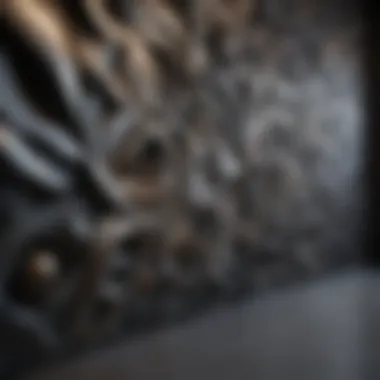
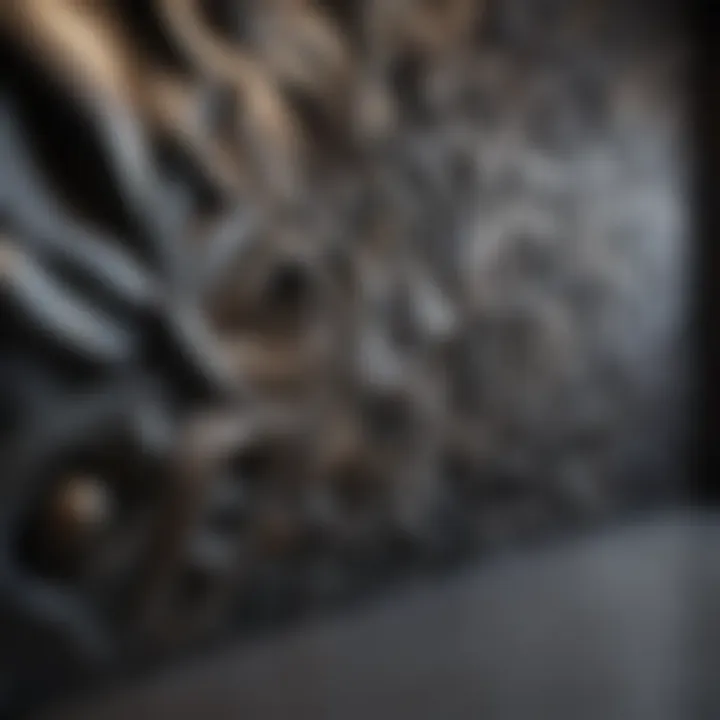
Using masking tape is another efficient approach to create sharp lines and precise patterns. This technique is ideal for geometric shapes or crisp edges, which are often difficult to achieve by freehand painting.
Key points to consider include:
- Preparation: It is essential to secure the tape properly on the surface to prevent paint from seeping underneath.
- Layering: Homeowners can apply multiple colors with ease by allowing each layer to dry completely before applying more tape for the next color.
This method can create stunning contrasts and a clean finish that makes a room appear more modern and sophisticated. With countless possibilities in design, masking tape can be a crucial tool in the artist’s toolkit.
Use of Projectors
For those looking to achieve highly detailed patterns or large-scale images, projectors offer a modern solution. This technique involves projecting a design onto the wall and tracing it with paint, making it possible to achieve precision without the need for freehand skills.
There are various advantages to using projectors:
- Precision: Designs can be scaled to fit any wall size, ensuring accurate proportions. This technology can accommodate everything from simple logos to complex murals.
- Clarity: Projectors reveal details that might otherwise be overlooked, allowing for patterns that seamlessly blend into the overall design of a room.
However, projectors can be costly and require a learning curve in terms of setup and operation. Nevertheless, they represent an exciting advancement in decorative painting, ideal for homeowners aiming for impactful wall art.
In summary, mastering these techniques allows homeowners to transform their living spaces into personal sanctuaries that reflect their unique identities.
Color Psychology in Pattern Selection
Understanding color psychology is essential for homeowners wanting to design unique and aesthetically pleasing interiors. The colors chosen for wall paint not only reflect personal taste but also influence mood and perception. By selecting the right colors and patterns, homeowners can create environments that foster the feelings and atmospheres they aim to achieve.
Impact of Colors on Mood
Colors have a profound impact on human emotions and behaviors. Each hue resonates with particular feelings. For example, warm tones like red and orange can evoke feelings of warmth and enthusiasm; conversely, cooler tones such as blue and green have a calming effect.
- Red: Stimulates energy and passion.
- Blue: Promotes peace and relaxation.
- Yellow: Encourages happiness and optimism.
- Green: Represents nature and tranquility.
This relationship between colors and emotions makes the choice of paint fundamental in home design. A living room painted in soft blue may foster a serene atmosphere, while a kitchen adorned in vibrant yellows can inspire creativity and conversation.
"Selecting colors for your interior spaces is not just about aesthetics but also about enhancing emotional well-being."
Combining Colors and Patterns
The art of combining colors and patterns can greatly amplify the visual appeal of a space. Choosing complementary colors and balancing patterns is vital to achieve harmony.
- Contrast and Complementation: Use contrasting colors to highlight areas or focal points, while complementary colors can unify a space.
- Balance Patterns: When mixing patterns, it’s often effective to maintain a cohesive color palette. For instance, a bold geometric pattern can balance a soft floral design when both share common colors.
Ultimately, thoughtful combinations can significantly enhance an interior's character. Homeowners should not shy away from experimenting, as innovative combinations often lead to stunning outcomes. Overall, the marriage between color and pattern ultimately informs the ambiance and function of residential spaces.
Practical Considerations for Implementation
Importance of Practical Considerations
When delving into the world of wall paint patterns, practical considerations are critical. These elements ensure the effectiveness and longevity of your chosen design. Ignoring them may lead to unforeseen difficulties during application and maintenance. Homeowners can achieve stunning results when they pay attention to these aspects. This section outlines the tools needed, proper planning, and the efficient use of time to bring wall paint patterns to life.
Selecting the Right Tools
Having the right tools is essential for successfully implementing wall paint patterns. Whether you choose stenciling, masking tape methods, or advanced techniques like projectors, each approach requires specific tools.
- Paint Brushes and Rollers: Different brush sizes and roller types allow for precise application. A small brush works well for details, while broader rollers are perfect for large areas.
- Tape and Stencils: High-quality painter's tape prevents paint bleeding, while precision stencils help in achieving sharp designs. Selecting durable tape increases the chances of clean edges.
- Projector Tools: For those opting for intricate designs, a projector can help outline patterns accurately on the wall, ensuring precise placement.
Using the correct tools not only makes the job easier but also enhances the overall finish of the paint patterns. Investing in a quality set can save time and effort, leading to satisfying results.
Preparation and Planning
Preparation is a vital step in executing wall paint patterns. Developing a detailed plan can minimize errors and ensure that any designs align with the overall home aesthetic. Here are some key points to consider:
- Choosing the Right Location: Different rooms may call for distinct patterns based on their size, light, and function. A bustling hallway may benefit from subtle patterns, while a living room can handle bolder designs.
- Color Selection: Before beginning, consider how chosen colors relate to furniture and decor. Proper color coordination enhances visual coherence across the space.
- Surface Preparation: Adequately prepping surfaces is non-negotiable. Walls should be clean, dry, and sometimes primed, ensuring that paint adheres well.
Taking time in preparation pays off. A well-organized plan, along with proper color and surface preparation, sets the foundation for success.
Time Management During Application
Effectively managing time during the application process can drastically influence the outcome of your project. Mismanaged time can lead to rushed applications, affecting the quality of the finish. Consider these strategies:
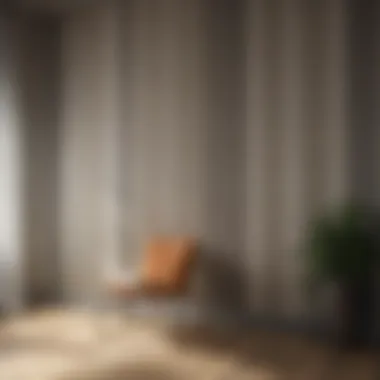
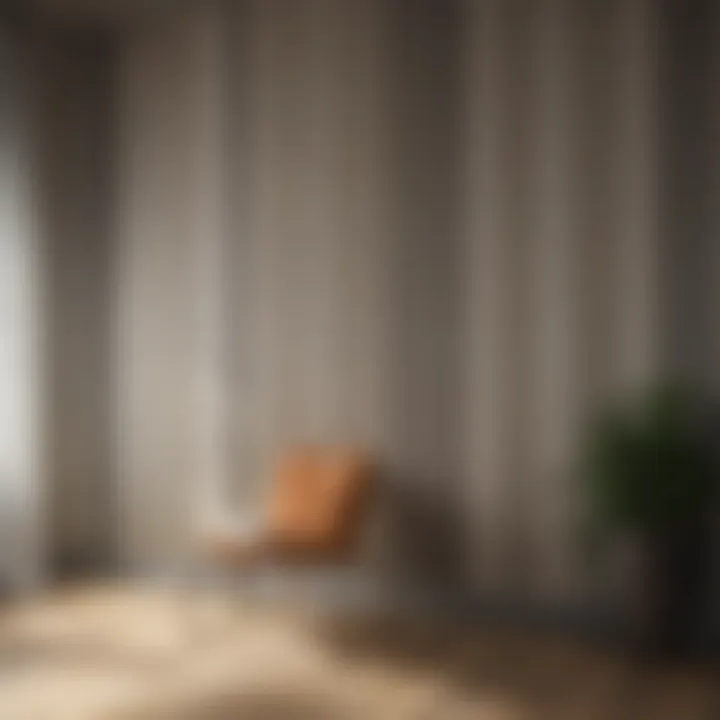
- Create a Timeline: Set realistic deadlines for each step, from preparation to clean-up. Allocate specific times for paint drying to ensure each layer is complete before moving on.
- Work in Sections: Rather than approaching the project as a whole, divide it into manageable sections. This allows for detailed attention to each area, reducing the chance of mistakes.
- Avoid Distractions: Focus on the task at hand. Limit distractions to maintain a steady workflow. Clear the area of excess items and designate the space as your project zone.
"Proper time management ensures a smoother process and enhances the overall finish of your wall paint patterns."
With careful planning, every step of the application becomes easier. Achieving your desired wall paint patterns is possible when attention is paid to both preparation and time management.
Maintenance of Painted Patterns
Maintenance of painted patterns is an essential aspect often overlooked by homeowners and design enthusiasts. After investing significant time and resources into creating visually appealing spaces, understanding how to care for these patterns ensures their longevity and vibrancy.
Proper maintenance not only preserves the aesthetic appeal but also enhances the functionality of painted surfaces. Regular cleaning and repairs can prevent further damage and the need for complete reapplications later. When patterns are well-maintained, they reflect a commitment to quality that resonates throughout the home.
Another crucial point is that maintenance can save money and time in the long run. By being proactive with care, you are less likely to face deterioration that would require extensive work. Homeowners should see maintenance as an investment, prolonging the life of their beautifully crafted spaces.
Cleaning Techniques
Cleaning painted patterns requires gentle care to avoid damaging the finish or design. Here are some effective cleaning techniques to consider:
- Dust Removal: Regularly dust the walls using a microfiber cloth or a soft feather duster to prevent dirt buildup.
- Mild Cleaner Solution: Mix a few drops of mild dish soap with water for a gentle cleaner. Using a soft cloth, wipe the surface to remove stains without harsh chemicals.
- Spot Testing: Always test any cleaning solution on a small, inconspicuous area before applying it to the entire section. This ensures that no adverse reactions occur, maintaining integrity of the pattern.
- Avoid Abrasive Materials: Steer clear of sponges or scrubbers that can scratch the paint. Instead, use non-abrasive materials for a more gentle touch.
By applying these cleaning techniques regularly, homeowners can keep their painted patterns looking fresh and vibrant.
Touch-Ups and Repairs
Over time, even the best-maintained painted patterns may need touch-ups or repairs due to normal wear and tear. Addressing these issues promptly will prevent them from worsening. Here are crucial steps for effective touch-ups and repairs:
- Identify Problem Areas: Inspect the walls frequently, looking for chips, scratches, or fading patterns. Early detection allows for quicker intervention.
- Color Matching: When performing touch-ups, matching the paint color and finish is paramount. Use leftover paint from the original job if available. If not, consider taking a sample to a paint store for matching.
- Application Techniques: Use a small brush or a sponge to apply the paint to the specific area. Apply in thin layers and gradually build up the color to match the original look.
- Careful Finishing: After touch-up, ensure proper drying before touching the area or placing furniture back. This mitigates smudges and preserves the pattern integrity.
In summary, maintaining painted patterns through appropriate cleaning and timely repairs not only enhances the visual appeal of a home but also safeguards the homeowner's investment in style and design.
Emerging Trends in Wall Paint Patterns
Emerging trends in wall paint patterns represent a fascinating intersection of creativity and technology in modern interior design. With the growing demand for personalized spaces, homeowners today seek options that are not only visually appealing but also sustainable and functional. Staying abreast of these trends is crucial for any design enthusiast or homeowner looking to create a space that resonates with contemporary values and aesthetics.
New patterns can transform any standard wall into a compelling focal point. They add rhythm, movement, and interest to rooms often constrained by conventional designs. Homeowners, party hosts, and gardening aficionados look for ways to reflect their personality through innovative techniques and styles. This section takes a closer look at two significant emerging trends in wall paint patterns: sustainable painting techniques and digital or interactive patterns.
Sustainable Painting Techniques
Sustainability is at the forefront of many homeowners' minds today. The awareness of environmental impact encourages individuals to consider responsible choices, especially in home decor. Sustainable painting techniques not only help in reducing waste but also promote healthier indoor environments.
Key components of sustainable painting techniques include:
- Eco-friendly Paints: These paints often use natural or organic ingredients, which are less harmful than traditional paints. Brands like Benjamin Moore and Sherwin-Williams offer low-VOC (Volatile Organic Compounds) options that minimize indoor air pollution.
- Recycled Materials: Incorporating materials that have been recycled or repurposed can add uniqueness to the painting process. For instance, using fabric scraps or old newspapers for a textured wall can be both charming and eco-conscious.
- Technique Adaptation: Methods like sponging or stenciling can reduce the amount of paint used, promoting a minimalistic approach.
These techniques do not just embody a commitment to the environment; they also allow for creativity. Homeowners can express their individuality while minimizing their ecological footprint.
Digital and Interactive Patterns
As technology advances, it opens new avenues for creativity in wall painting. Digital and interactive patterns are redefining how homeowners approach wall decor.
Some exciting elements of digital and interactive patterns are:
- Projection Mapping: This technique utilizes projectors to display dynamic patterns on walls. The designs can change, allowing for versatile aesthetics that can adapt to different moods or occasions.
- Augmented Reality (AR): Homeowners can now visualize how different patterns will look in their space through AR applications before committing to a design. This technology reduces errors and increases satisfaction in the final result.
- Smart Paints: There is ongoing development in paints that can change color based on temperature or light. This innovative approach allows for responsive wall designs that engage the senses.
These trends not only enhance the design possibilities but also make wall decor interactive. The ability to modify looks without extensive redecorating can serve the modern homeowner’s busy lifestyle.
As the realm of wall paint patterns evolves, it crucially integrates sustainable practices and technological advancements to redefine how we perceive and implement wall decor in our homes.
Ending
In this article, we have explored the realm of wall paint patterns, an important aspect of interior design that speaks volumes about personal style and creativity. The conclusion essentially synthesizes the various insights regarding innovative wall paint techniques, their practical applications, and the emerging trends that are shaping today's living spaces.
Summarizing Key Insights
Throughout our discussion, several key points have emerged:
- Diverse Patterns: Wall paint patterns are not limited to solid colors. From stripes to geometric shapes and nature-inspired designs, homeowners can choose from a wide variety that suits their preferences and enhances their spaces.
- Techniques Matter: The method of applying paint patterns can drastically affect the outcome. Techniques such as stenciling, masking tape, and projector use offer unique finishes. Each has benefits and requires different levels of skill and preparation.
- Color Psychology: The colors chosen for these patterns can influence mood and perception within a room. Understanding how color interacts with patterns allows for more intentional design choices.
- Maintenance: Proper care for painted patterns is essential to preserve their appearance. Knowing the right cleaning techniques and how to perform touch-ups can prolong the life of the designs.
- Future Trends: The emergence of sustainable paints and interactive digital patterns shows that wall design is evolving. These innovations align with a growing awareness of environmental concerns and the desire for more engaging home experiences.
Final Thoughts on Wall Paint Patterns
As we move forward, being open to new trends and techniques will be vital. Keeping informed of sustainable practices and advancements in color technology will not only enhance your living environment but also contribute to a more responsible approach to home design.
"The walls of your home are a canvas waiting for your creative touch."!
With these insights, the world of wall paint patterns becomes accessible and exciting, making it a field ripe for exploration. Embrace the innovations available and redefine your home today.















